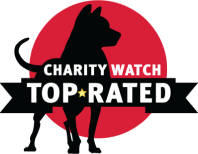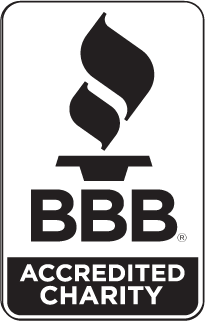What Women Want: User-Centric Approach to HIV Prevention Methods
USAID-Funded Study to be Presented by Project HOPE at AIDS 2022

Washington, DC (28 July 2022) – The global health and humanitarian aid organization Project HOPE will be presenting the findings of a new study on pre-exposure phylaxis (PrEP) for HIV prevention at AIDS 2022 in Montreal on Sunday, July 31st as part of a Late Breaker track. The USAID-supported study focuses on a user-centered design approach to survey adolescent girls and young women (AGYW) from 10 to 24 years old on given choices for what HIV Prevention methods what would be their personal preference. The findings unanimously show that the new method, long-acting injectable cabotegravir (CAB-LA), is the preferred PrEP option among AGYW mainly due to its long-acting efficacy and its discreteness.
“Sadly, HIV incidence among AGYW in Sub-Saharan Africa still remains high. Both transactional sex and age-disparate relationships (ADR) increase HIV risk, particularly for adolescent girls and young women[1],” said Project HOPE’s Deputy Chief Health Officer, Dr. Nagesh Borse. “It is great to see more prevention tools coming out for HIV/AIDS; this diversity of options will help improve adherence and dramatically reduce new HIV infections in vulnerable AGYW.”
This discrete choice experiment was conducted under the DREAMS (Determined, Resilient, Empowered, AIDS-Free, Mentored, Safe) project in the Khomas region of Namibia, which was funded by PEPFAR through USAID and run by Project HOPE Namibia to empower AGYW to reach their full potential, with HIV prevention as a key tenet of the program. DREAMS data showed, however, that adherence to PrEP pills remains a huge challenge in this population, putting them at immediate increased risk of HIV infection.
The What Women Want study’s objective was to identify issues with current daily PrEP and assess potential interest in a wider pool of emerging PrEP methods, including the long-acting injectable cabotegravir (CAB-LA) and dapivirine vaginal ring (DPV-VR). Given recent HIV Prevention Trial Network (HPTN) 084 results, global HIV prevention experts are particularly interested in the CAB-LA option, which was deemed as superior to daily oral PReP pills in the HPTN 084 clinical trial, due to its effectiveness over eight weeks versus daily usage.
A survey was conducted using a convenient sampling method with 1,675 active AGYW from the Khomas region in April 2022. Interview questions included demographics, PrEP knowledge, attitude, practices, and preferred PrEP options. Before the PrEP preferred options section was administered, DREAMS Nurses used visual and narrative descriptions to educate AGYW on the attributes of PrEP options – efficacy, frequency of dosing, discreteness, and potential side effects (i.e., oral, DPV-VR, and CAB-LA).
Of the 1,656 respondents, 83% of AGYW were willing to use any of the three PrEP options (if available) but, of these, 61% indicated a preference for the injectable (CAB-LA), while 27% preferred oral and 12% preferred DPV-VR. The strongest determinant amongst participants was HIV prevention efficacy, followed by a desire for less frequent use and discreteness.
“The study results are similar to what has been observed in the contraceptive market: women want to have more prevention options so they can decide which is safest and most appropriate for their needs. User-centered designed health interventions can improve adherence and overall uptake of HIV prevention, which ultimately results in a decline in new infections,” said Project HOPE’s Dr. Borse who led USAID Microbicides research activities in Sub-Saharan Africa and was actively involved in Namibia’s PrEP launch.
“This study is significant because it reminds us of the important role choice plays in HIV prevention. Vulnerable young women and others should have the opportunity to choose which HIV prevention product works best for them. The CAB-LA injection, given every two months, will play a critical role in addressing the HIV epidemic in many countries, especially among individuals and groups where adherence to daily medication is not a feasible option,” says USAID/Namibia Country Representative, Dr. McDonald Homer.
###
Interviews with health and humanitarian emergency response experts available upon request. For more information or to schedule an interview, please contact:
Courtney Ridgway, Director of Media Relations, media@ProjectHOPE.org
About DREAMS Namibia
Funded by PEPFAR through USAID/Namibia, DREAMS (Determined, Resilient, Empowered, AIDS-Free, Mentored, Safe) is a project for Adolescent Girls and Young Women (AGYW) aged 10-24 years aimed at empowering them to reach their full potential. DREAMS seeks to reduce new HIV infections among AGYW by providing them with a comprehensive package of interventions. DREAMS uses multifaceted community and facility-based platforms to deliver a core package of interventions, including ongoing HIV and GBV prevention education; mentorship; youth friendly SRH services; provision of menstrual hygiene management materials; education support; financial literacy; skills building through entrepreneurship and apprenticeships; support for job placement; PrEP; and HIV testing services. PHN also provides support to caregivers and sexual partners of AGYW. As a result of DREAMS interventions, over 13,000 AGYW have been enrolled on PrEP, over 51,000 AGYW have completed HIV prevention education sessions, over 8,000 survivors of violence have been linked to post-violence care, and over 32,000 are actively enrolled in the DREAMS program and receiving services.
About Project HOPE Namibia (PHN)
PHN is an African local non-profit welfare organization that started operations in 2002 by providing small scale workplace HIV/AIDS programs in the country. Our current focus areas include HIV/AIDS, pandemic preparedness and response, and providing integrated support for adolescent girls and young women (AGYW) as well as orphans and vulnerable children (OVC). We work in close collaboration with the Namibian government and other development partners to contribute to a world where everyone has the health care needed to reach life’s full potential. PHN is actively implementing activities in all 14 regions of Namibia. Learn more about PHN at www.prepwatch.org/namibia.
About Project HOPE
Founded in 1958, Project HOPE is a leading global health and humanitarian organization operating in more than 25 countries around the world. We work side-by-side with local health systems to save lives and improve health. Our mission is at the epicenter of today’s greatest health challenges, including infectious and chronic diseases, disasters and health crises, maternal, neonatal and child health and the policies that impact how health care is delivered. For more information on Project HOPE and its work around the world, visit www.ProjectHOPE.org and follow us on Twitter @ProjectHOPEOrg.
[1] George et al, Determining HIV risk for Adolescent Girls and Young Women (AGYW) in relationships with “Blessers” and age-disparate partners: a cross-sectional survey in four districts in South Africa







